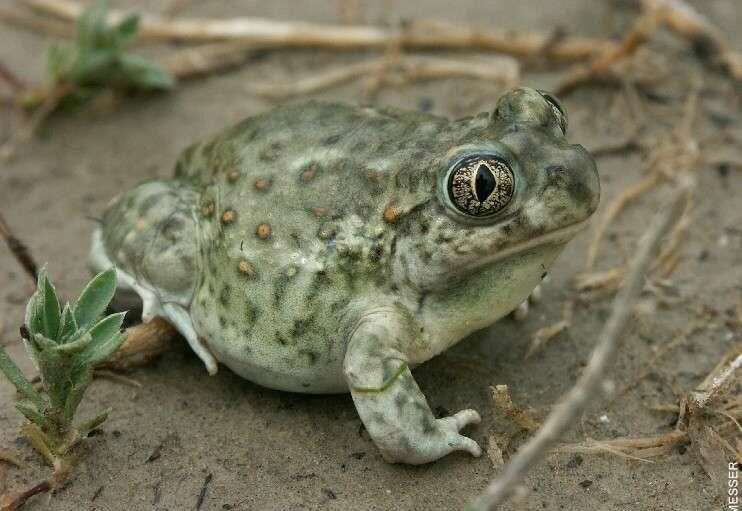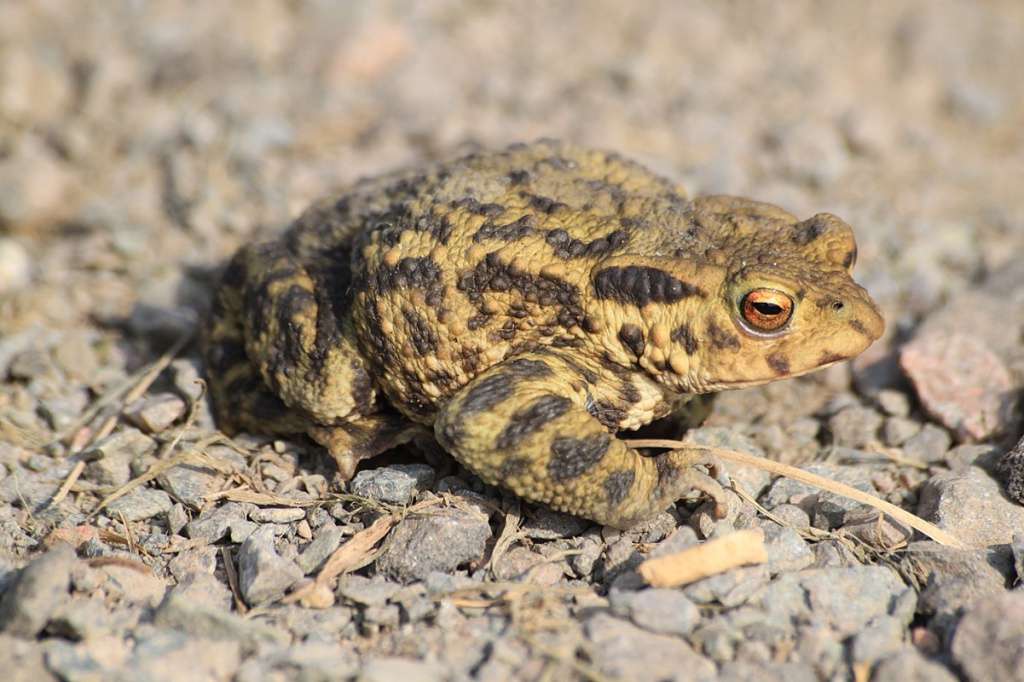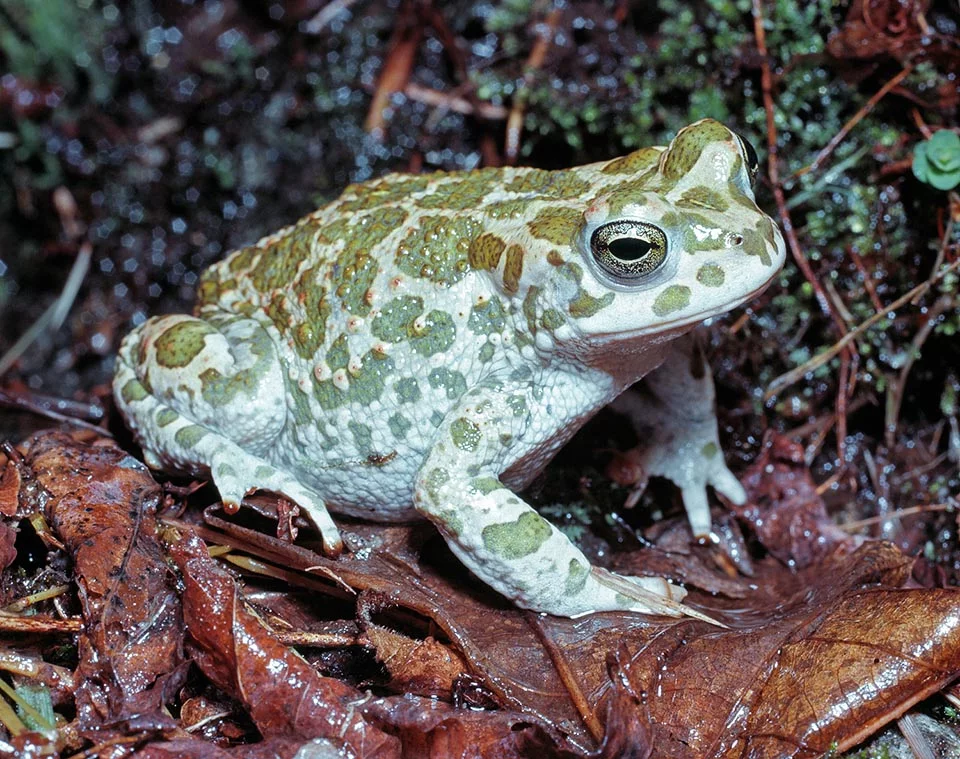
The spadefoot toad (Spea bombifrons) can be found in northern Mexico as well as southwestern Canada and the Great Plains in the western United States. Their wide, rather than “sickle-shaped,” keratinized metatarsals, which give them their name, are a contributing factor.
Appearance
The plains spadefoot toad has a spherical body, relatively short legs, and a length that ranges from 1.5 to 2.5 inches (38 to 64 mm). These toads typically have orange markings that range in colour from tan to dark reddish. Because they resemble a frog more than a toad, they are among the easiest toads to identify in their area. On their backs, they occasionally show minor striping.

Habitat
The plains spadefoot toad can be found in northern Mexico as well as southwestern Canada and the Great Plains in the western United States.
Diet
These individuals become much larger and develop serrations on their mouthparts, enabling them to catch and kill invertebrates such as fairy shrimp and smaller tadpoles, even those of the same species. The carnivorous form is triggered by drying ponds and ingestion of fairy shrimp.
Reproduction
Generally speaking, S. bombifrons is active from the beginning of its breeding season until the fall. The breeding season typically coincides with annual precipitation peaks. S. bombifrons breed in the middle of its range from May to August. After the summer rains, in the southernmost portion of its habitat, S. bombifrons breed in July. Breeding may begin in the northern region as early as late May. Breeding may not take place at all if the right environmental factors are not present during the active season; on the other hand, if the circumstances are extremely favourable, S. bombifrons may breed more than once in a single year.
Table





